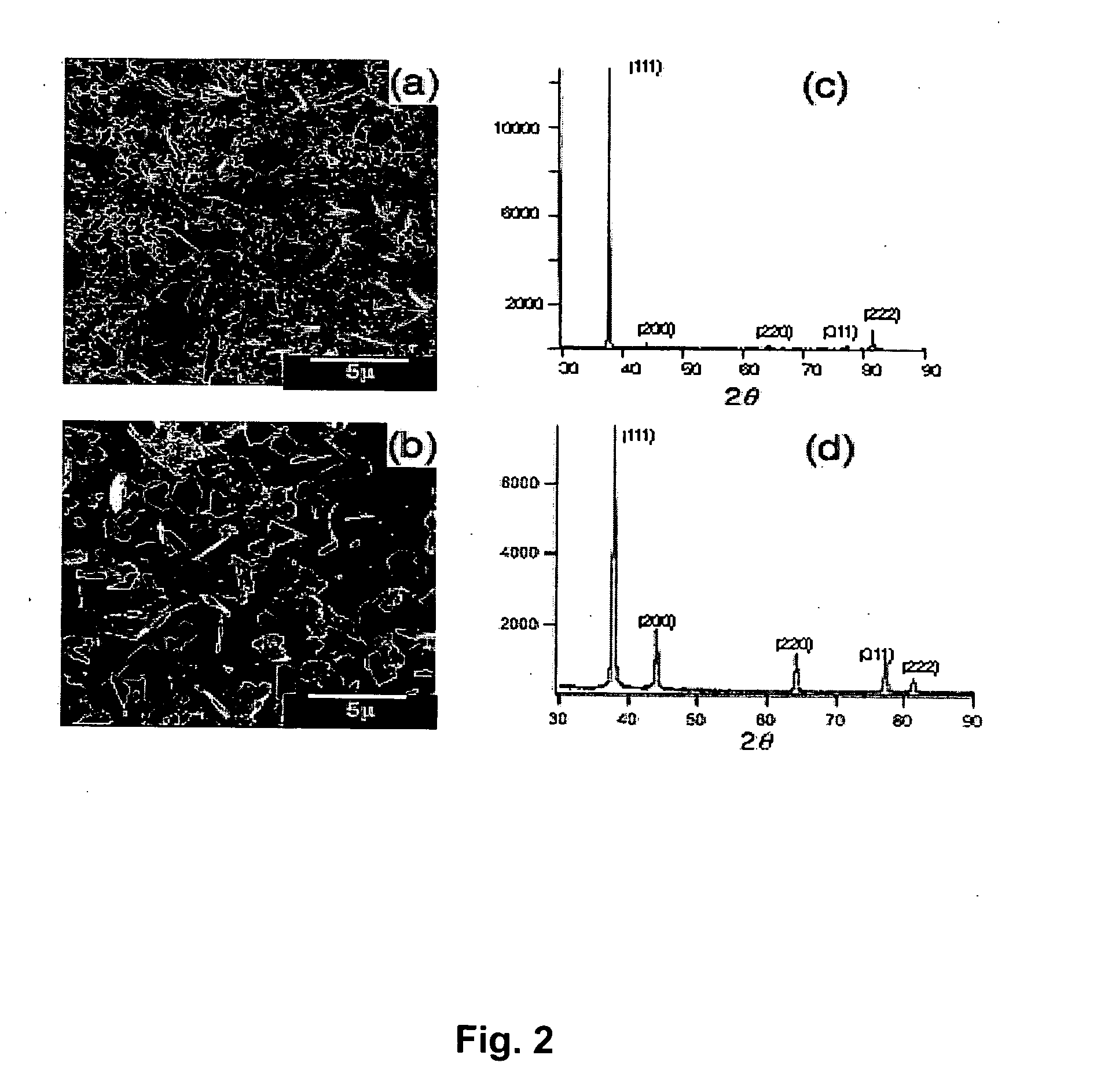Nanostructured metal-polyaniline composites
a technology of metal-polyaniline and composites, which is applied in the direction of metal/metal-oxides/metal-hydroxide catalysts, optical radiation measurement, etc., can solve the problems of nanostructure, inability to control the nature of metal structure on the conducting polymer surface, etc., and achieve the effect of convenient recovery and reus
- Summary
- Abstract
- Description
- Claims
- Application Information
AI Technical Summary
Benefits of technology
Problems solved by technology
Method used
Image
Examples
example a
[0047]Fabrication of PANI porous asymmetric membranes was achieved employing a phase inversion method using water as a coagulation bath. Following a typical procedure, 3.70 grams (g) of N-methyl-2-pyrrolidone (NMP) was placed into a 12.0 milliliter (mL) Teflon vial. Then, 0.31 g of heptamethylenimine (HPMI) was added to the vial. The vial was sealed with a Teflon cap and maintained in an oven at 60° C. for 5 minutes. Then, 1.00 g of EB powder was added to the vial. The solution was slowly stirred with a homogenizer and slowly ramped up to 5000 rpm for 25 minutes. The EB / HPMI molar ratio was 1:1 (the moles of EB were calculated based on the tetrameric repeat unit). The resulting EB solution was poured onto a glass plate and spread into a wet film using a gardener's blade (Pompano Beach, Fla.) with a preset thickness. The wet film was then immersed into the water bath and held in the water bath for more than 24 hours. The resulting membrane was then dried under vacuum at room temperat...
example 1
Metallization
[0048]The porous asymmetric PANI membranes from example A were then immersed into selected metal-ion solutions for a time period ranging from several seconds to about 24 hours depending upon the rate of reaction. 100 millimole (mM) metal-ion solutions were prepared using as-purchased AgNO3, AuCl3 and K2PtCl4 without further purification.
[0049]The structure of the doped PANI membranes and metal PANI membrane composites were studied by X-ray diffraction (XRD) with a Siemans D5000 four-circle diffractometer with a Cu Kα radiation source (λ=0.15418). Normal θ-2θ scans were performed on the membrane and composite samples to determine their crystallographic orientation. SEM micrographs of the metal-PANI composites were taken using a JEOL 6300FXV SEM and FEI Quanta FEG ESEM.
example 2
SERS
[0050]Nanostructured silver was grown on a citric acid-doped porous PANI asymmetric membrane and exhibited a sheet-like morphology having sharp edges (see FIG. 5). That composite structure was tested as a suitable SERS substrate. The results of the SERS screening for 1,2-bis(4-pyridyl)ethylene, (bpe), deposited on the silver achieved the results shown in FIG. 9. It can be seen that the SERS signal was much stronger with the metal-PANI composite, where the metal was silver, with 1,2-bis(4-pyridyl)ethylene (bpe) deposited on the silver than with the comparison trials of PANI membrane with bpe (and no metal) or a PANI membrane with silver alone from which there was barely any SERS signal. See FIG. 9. The metal-PANI composite of the present invention clearly enhanced the analytical results.
PUM
| Property | Measurement | Unit |
|---|---|---|
| reduction potential | aaaaa | aaaaa |
| reduction potential | aaaaa | aaaaa |
| reduction potential | aaaaa | aaaaa |
Abstract
Description
Claims
Application Information
 Login to View More
Login to View More - R&D
- Intellectual Property
- Life Sciences
- Materials
- Tech Scout
- Unparalleled Data Quality
- Higher Quality Content
- 60% Fewer Hallucinations
Browse by: Latest US Patents, China's latest patents, Technical Efficacy Thesaurus, Application Domain, Technology Topic, Popular Technical Reports.
© 2025 PatSnap. All rights reserved.Legal|Privacy policy|Modern Slavery Act Transparency Statement|Sitemap|About US| Contact US: help@patsnap.com



